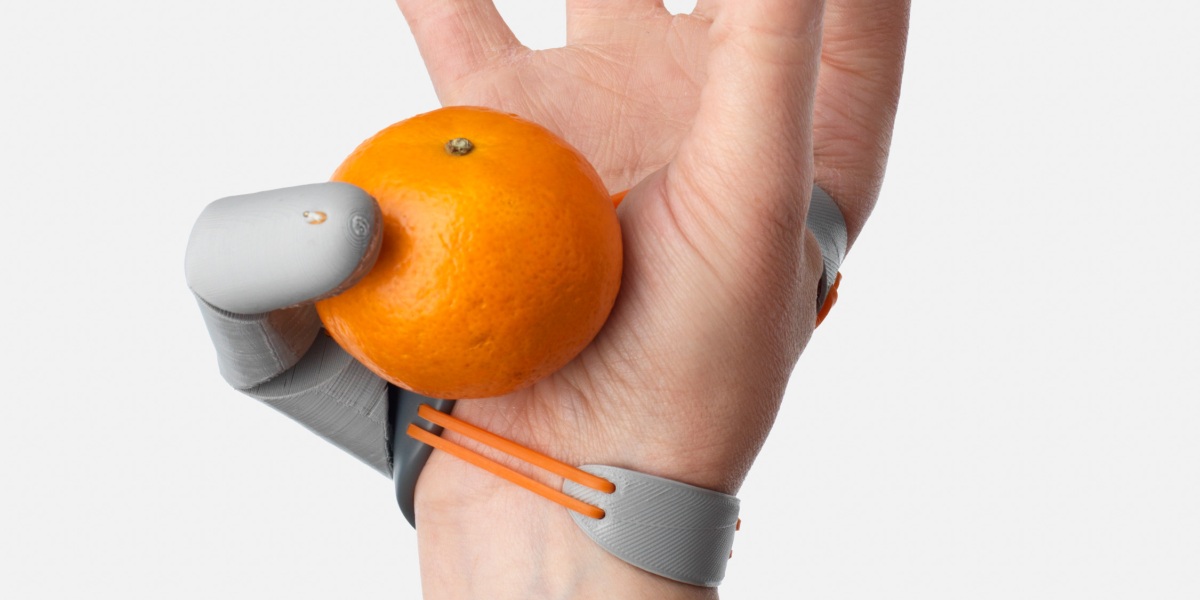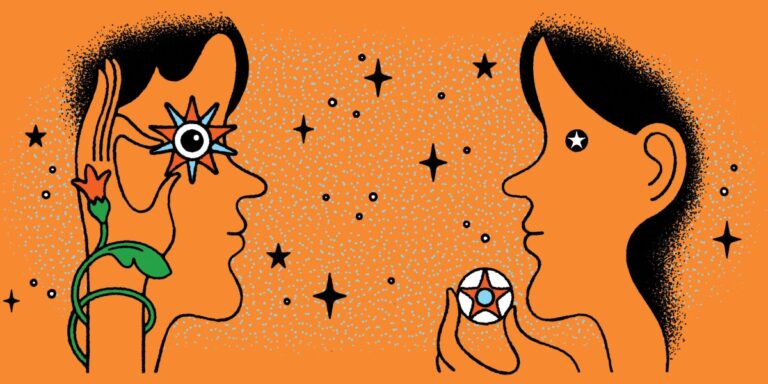
Clode’s current project, one that is also helping her get work done, is a “third thumb” that anyone can use to augment their grip. The flexible device is powered by motors and controlled using pressure sensors in the wearer’s shoes. Volunteers have learned to use it to unscrew a bottle, drink tea, and even play guitar. She hopes that one day the thumb (and devices like it) might help everyone from factory workers to surgeons perform tasks more efficiently, with less strain on their own bodies.
Traditionally, prosthetics designers have looked to the human body for inspiration. Prosthetics were seen as replacements for missing body parts; hyperrealistic bionic legs and arms were the holy grail. Thanks to sci-fi franchises like Star Wars, such devices still have a vise grip on our collective imagination. For better or worse, they’ve shaped how most people conceive of the future of prosthetics.
But Clode is part of a movement in alternative prosthetics, a form of assistive tech that bucks convention by making no attempt to blend in. Instead of making devices that mimic the appearance of a “normal” arm or leg, she and her fellow designers are creating fantastical prosthetics that might wriggle like a tentacle, light up, or even shoot glitter. Other unconventional prosthetics, like the blade legs favored by runners, are designed for specific tasks. Designers believe that these devices can help prosthetics users wrest back control of their own image and feel more empowered, while simultaneously breaking down some of the stigma around disability and limb differences.
But even as alternative prosthetics gain visibility, they are shadowed by an uncomfortable fact: prosthetics are still accessible only to a small percentage of those who could benefit from them. In a world in which many people who want a prosthetic can’t afford one, advocates are searching for a middle ground where accessibility, style, and substance overlap.
Prosthetic devices are old and deeply human. The earliest known artificial limbs are from ancient Egypt: two sculpted toes, one found strapped to the right foot of a mummy, which date back 2,500 to 3,000 years and bear unmistakable marks from corded sandals.
Ancient people crafted and wore prosthetics for myriad reasons—some practical, some spiritual, some tinged with ableist logic. Most were designed to blend in, but some intentionally stood out. When the Roman general Marcus Sergius Silus lost his hand in the Second Punic War, he reportedly ordered up an iron replacement. At least one medieval Italian man appears to have replaced his hand with a knife.
Instead of making devices that mimic the appearance of a “normal” arm or leg, Clode and her fellow designers are creating fantastical prosthetics that might wriggle like a tentacle, light up, or even shoot glitter.
The impulse to customize one’s prosthetic makes sense to Victoria Pitts-Taylor, a professor of gender studies at Wesleyan University who has researched body modification in culture, medicine, and science. “Whatever we’re doing to our bodies, we’re not doing it to them in a social vacuum,” she says. Veterans may want to express their identity with a physical tribute to their military service, while artists may want to experiment with color and pattern.
In Pitts-Taylor’s view, everyone in society is expected to modify their body in some way—by getting certain haircuts, for example, and wearing particular clothes. “When we are able to find ways to modify our bodies that reflect our sensibilities and our sense of ourselves, it feels really good,” she says.






